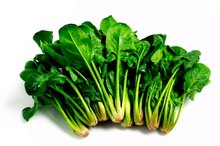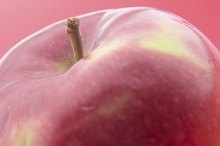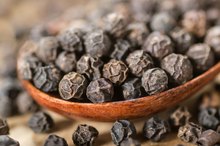What does fact checked mean?
At Healthfully, we strive to deliver objective content that is accurate and up-to-date. Our team periodically reviews articles in order to ensure content quality. The sources cited below consist of evidence from peer-reviewed journals, prominent medical organizations, academic associations, and government data.
- The Journal of Reproductive Medicine: Influence of Dietary Oxalates on the Risk of Adult-Onset Vulvodynia
- The Journal of Reproductive Medicine: Influence of Dietary Oxalates on the Risk of Adult-Onset Vulvodynia
The information contained on this site is for informational purposes only, and should not be used as a substitute for the advice of a professional health care provider. Please check with the appropriate physician regarding health questions and concerns. Although we strive to deliver accurate and up-to-date information, no guarantee to that effect is made.
Low Oxalate Diet & Vulvodynia
Vulvodynia, which literally means “painful vulva,” is a condition characterized by pain, burning and irritation around the opening of the vagina. Because the cause of vulvodynia has not been established, treatment for the condition is often difficult. One popular treatment method for vulvodynia is a low-oxalate diet, which reduces the amount of a waste product called oxalate in the urine 3. Before making changes in your diet, consult your physician.
If you are experiencing serious medical symptoms, seek emergency treatment immediately.
Evidence For and Against
A case report published in "The Journal of Reproductive Medicine" in 1991 found that a woman who experienced chronic pain from vulvodynia had extremely high levels of oxalate in her urine 56. After following a low-oxalate diet combined with calcium citrate supplements, the woman was able to reduce her levels of urinary oxalate, as well as her vulvodynia symptoms 3. After one year of treatment, symptoms disappeared entirely.
A study by Dr. Barbara Reed of the University of Michigan Medical School, Ann Arbor, published in the “American Family Physician” in 2006, reported that a low-oxalate diet can decrease the amount of oxalate in the vulvar tissue 234. However, this same study reported that the use of such a diet remains controversial. In fact, a study in the March 2008 issue of "The Journal of Reproductive Medicine" reports that high intake of oxalates in diet have nothing to do with an increased risk of vulvodynia 6.
Low-Oxalate Diet Details
Calcium Citrate and Vulvodynia
Learn More
Most of your diet should consist of low-oxalate foods, which contain less than 2 milligrams of oxalate per serving. These foods include:
- cheese
- milk
- avocado
- bananas
- mangoes
- pork
- poultry
- beef
- shellfish
- pasta
- white rice
- cabbage
- cucumber
- peas
- mushrooms
Fluid Intake
In addition to cutting out high-oxalate foods and limiting medium-oxalate foods, it is also important to increase your fluid intake. The University of Pittsburgh Medical Center recommends 8 to 13 cups of fluid per day 4. Water is best, but you may also meet your fluid needs through other low-oxalate beverages such as:
- herbal tea
- apple juice
- green tea
- soda
- grapefruit juice
Things to Consider
Foods to Avoid Because of Vulvodynia
Learn More
When taken in conjunction with a low-oxalate diet, calcium citrate supplements may help decrease the amount of oxalate that deposits in the tissues of the vulva and promote excretion of any excess oxalate 3. Treatment with calcium citrate generally begins with two tablets twice per day and then increases to 4 tablets twice per day in combination with a low-oxalate diet. Specific dosage recommendations will differ based on your condition. Reed notes that although many women report improvement in symptoms while taking calcium citrate supplements, there is only anecdotal evidence to support the use of this supplement.
- When taken in conjunction with a low-oxalate diet, calcium citrate supplements may help decrease the amount of oxalate that deposits in the tissues of the vulva and promote excretion of any excess oxalate 3.
- Reed notes that although many women report improvement in symptoms while taking calcium citrate supplements, there is only anecdotal evidence to support the use of this supplement.
Related Articles
References
- American Congress of of Obstetricians and Gynecologists: Vulvodynia
- American Family Physician: Vulvodynia: Diagnosis and Management; Barbara Reed; April 2006
- Vulval Pain Society: The Low-Oxalate Diet
- University of Pittsburgh Medical Center: Low Oxalate Diet
- The Journal of Reproductive Medicine: Calcium Citrate for Vulvar Vestibulitis. A Case Report
- The Journal of Reproductive Medicine: Influence of Dietary Oxalates on the Risk of Adult-Onset Vulvodynia
- National Vulvodynia Association. Diagnosis.
- Vulvodynia. MedlinePlus. https://medlineplus.gov/ency/article/007699.htm
- What is Vulvodynia? National Vulvodynia Association. https://www.nva.org/what-is-vulvodynia/
- National Vulvodynia Association. Staff.
- National Vulvodynia Association. What causes vulvodynia?
- National Vulvodynia Association. What is vulvodynia?
- National Vulvodynia Association. Diagnosis.
- National Vulvodynia Association. Vulvodynia treatments.
- Vulvodynia. MedlinePlus.
- What is Vulvodynia? National Vulvodynia Association.
Writer Bio
Lindsay Boyers has a Bachelor of Science in nutrition from Framingham State College and a certificate in holistic nutrition from the American College of Healthcare Sciences. She is also a licensed aesthetician with advanced training in skincare and makeup. She plans to continue on with her education, complete a master's degree program in nutrition and, ultimately, become a registered dietitian.









